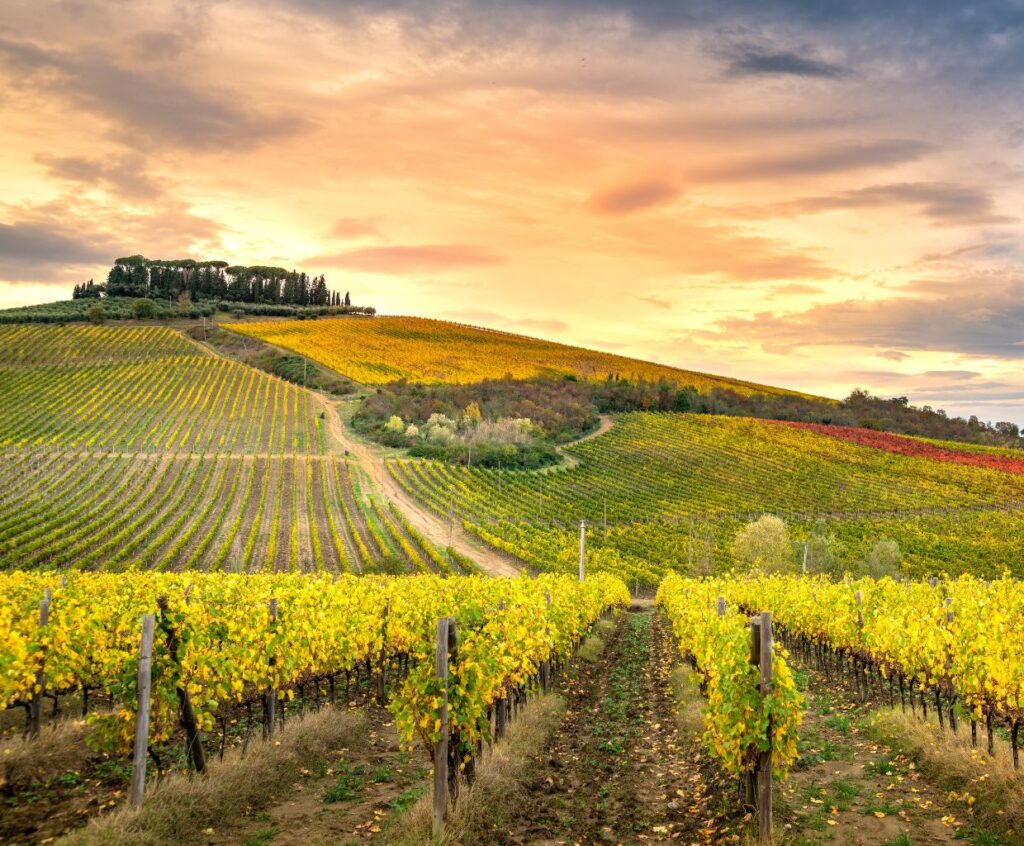What is Chianti Wine and Where is it From?
Chianti wine, a beloved red wine, originates from the beautiful region of Tuscany in Italy. This famous wine is renowned for its rich flavor, deep ruby red color, and ability to complement Italian cuisine perfectly.
Origins of Chianti Wine
The history of Chianti wine can be traced back to the 13th century when the region of Chianti was first mentioned in documents. However, it was in the 18th century when the recipe for the distinctive Chianti blend was perfected. The blend primarily consists of Sangiovese grapes, native to the region, and other grape varieties such as Canaiolo and Colorino.
Characteristics of Chianti Wine
Chianti wine is known for its unique characteristics that make it stand out from other red wines. It typically has an aroma of cherries, plums, and spices, which adds to its allure. The flavor profile of Chianti can vary depending on the specific vineyard and vintage, but it often exhibits a combination of fruitiness, earthiness, and well-balanced acidity.
Chianti Classico Region
Within the Chianti region, a smaller area called Chianti Classico is particularly renowned for producing high-quality Chianti wines. Chianti Classico is located between the cities of Florence and Siena and is characterized by its picturesque vineyards and rolling hills. The wines from this region bear the prestigious black rooster seal, which certifies their authenticity and adherence to strict production regulations.
Food Pairings
Chianti wine is incredibly versatile when it comes to food pairings. Its acidity and tannins make it a perfect match for traditional Italian dishes such as pasta with tomato-based sauces, grilled meats, and aged cheeses. The robust flavor of Chianti can cut through the richness of these dishes, creating a harmonious dining experience.
How does the production process of Chianti wine differ from other Italian wines?
Chianti wine production differs from other Italian wines in a few key ways. Here are some notable differences:
1. Grape Varieties: Chianti wine is primarily made from Sangiovese grapes, which give it a distinct flavor profile. Other Italian wines may use different grape varieties or blends.
2. Aging Requirements: Chianti wines have specific aging requirements. Traditionally, Chianti Classico must be aged for at least 24 months, including at least three months in bottle, while other Chianti wines have shorter aging periods. Other Italian wines may have different aging or no specific requirements.
3. Production Regulations: Chianti wine production is regulated by the Chianti Classico Consortium, which sets strict rules for grape cultivation, winemaking techniques, and aging. This helps maintain the quality and authenticity of Chianti wines. Other Italian wines may be subject to different regulations or have fewer restrictions.
4. Region of Production: Chianti wine is produced in the Chianti region of Tuscany, while other Italian wines are made in various regions across the country. Each region has unique terroir and winemaking traditions, which contribute to the distinct characteristics of the wines.
5. Tuscan Traditions: Chianti wine production often follows traditional Tuscan winemaking techniques. For example, large oak barrels called “botti” for aging are used daily in Chianti production. Other Italian wines may utilize different aging methods or winemaking practices based on regional traditions.
It’s important to note that while these differences exist, there can also be variations within Chianti wine production and other Italian wines. Different producers may have their approaches and styles, resulting in some individuality within the broader categories.
What are the key characteristics that define Chianti wine?
The following key features characterize Chianti wine:
1. Grape variety: Sangiovese is the primary grape variety used in Chianti wine production. It must make up at least 80% of the blend, although some producers may use a higher percentage.
2. Region: Chianti wine is produced in the Chianti region of Tuscany, Italy. It encompasses a specific area between the cities of Florence and Siena.
3. Aging requirements: Chianti wine must meet specific aging requirements. Basic Chianti must be aged for a minimum of 3 months, while Chianti Riserva requires a minimum of 2 years of aging, including at least three months in a bottle.
4. Production regulations: Chianti wine production is subject to strict regulations set by the Chianti Classico Consortium. These regulations dictate grape composition, vineyard location, and winemaking techniques.
5. Flavor profile: Chianti wine typically exhibits a medium-bodied profile with moderate acidity and tannins. It often displays flavors of cherry, plum, raspberry, and earthy notes. The aging process can add complexity and subtle hints of oak and spice.
6. Trademark symbol: Chianti wine bottles are marked with a black rooster (Gallo Nero) symbol, which indicates that it is a certified Chianti Classico wine produced in the original historical Chianti region.
7. Food pairing: Chianti wine is known for its versatility in food pairing. It pairs well with many dishes, including traditional Italian cuisine such as pasta, pizza, grilled meats, and aged cheeses.
Chianti wine is recognized for its traditional winemaking practices, regional authenticity, and distinctive flavor profile, making it a beloved choice among wine enthusiasts.
What is Chianti Wine and Where is it From? – In Conclusion
Chianti wine is a true gem of Italian winemaking, originating from the beautiful region of Tuscany. Its rich history, unique characteristics, and ability to complement Italian cuisine have made it a favorite among wine enthusiasts worldwide.
So, the next time you indulge in a delicious Italian meal, consider pairing it with a glass of Chianti to enhance the flavors and transport yourself to the rolling hills of Tuscany.




